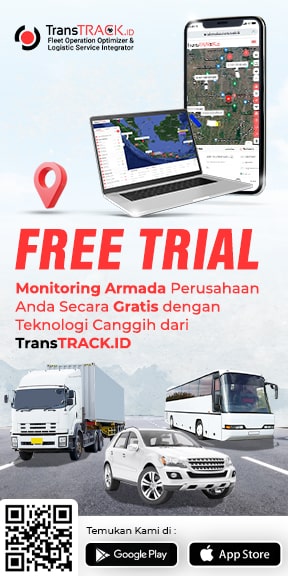How Much is the Traffic Violation Fine? Check Out the Details!
Posted on August 7, 2024 by Nur Wachda Mihmidati

Traffic violation are a serious matter that can not only jeopardize your safety and that of others on the road, but can also lead to hefty fines. Every offense, be it minor, moderate or severe, has financial consequences to consider. In this TransTRACK article, we will discuss the different types of traffic violations and the amount of fines imposed, as well as provide practical guidance to ensure you stay compliant with traffic rules and avoid unwanted sanctions. Understanding the rules and their consequences is the first step to becoming a more responsible driver.
Types of Traffic Violation and their Fines
The following are the types of traffic violation and their fines based on their severity:
Minor Offenses
- Examples: Not wearing a seat belt, driving while using a cell phone, or not turning on lights when driving during the day (especially for motorcycles).
- Fines: Usually a light fine is imposed, around Rp 250,000 to Rp 500,000, depending on the type of offense and the applicable regulations in a particular region.
Medium Offense
- Examples: Driving in the wrong lane, violating traffic signs, or driving without carrying the complete vehicle papers.
- Fines: Fines for moderate offenses can reach Rp 500,000 to Rp 1,000,000, with the possibility of additional sanctions such as temporary detention of the vehicle or driver’s license.
Major Offenses
- Examples: Drunk driving, extreme exceeding of the speed limit, or driving without a license.
- Fines:Major offenses can carry large fines, ranging from Rp 1,000,000 to Rp 4,000,000, and may be accompanied by additional sanctions such as vehicle detention, license revocation, or even arrest of the offender.
What happens if you don’t pay the fine?
If you don’t pay the ticket fine, several consequences may occur, including:
Additional Penalties
Not paying your speeding ticket fine on time can lead to additional penalties, such as a larger fine or increased administrative fees. In some cases, your vehicle or driver’s license may be suspended until the fine is paid.
Records on Driving History
Unsettled traffic violations, including non-payment of ticket fines, can be recorded on your driving history. This can affect your auto insurance and could worsen your rating when you apply for a license renewal or replacement in the future.
Court or Vehicle License Hold
If the fine is not paid within the stipulated time period, you may be required to attend a court hearing to settle the case. In addition, the authorities may withhold your vehicle registration or even your vehicle until all fine obligations are settled.
How to Avoid Traffic Violation
Here are ways to avoid traffic violations:
Obey Traffic Rules
Always follow traffic signs and rules, such as stopping at red lights, obeying speed limits, and using seat belts. Following these rules not only keeps you safe, but also prevents you from getting a ticket.
Drive Safely and Responsibly
Drive alertly, avoid using cell phones while driving, and always pay attention to road conditions and other road users. Driving with a responsible attitude helps prevent unnecessary accidents and violations.
Attend Traffic Safety Training and Education
Taking a driving safety course or training can improve your understanding of safe driving rules and practices. This additional knowledge will help you avoid violations and improve road safety.
How to Pay a Speeding Ticket Fine?
Here are the steps to pay the ticket fine:
Receiving the ticket
After committing a traffic violation and receiving a ticket, you will be given a colored slip (usually red or blue) indicating whether you have to attend a hearing or can pay the fine directly.
Checking the amount of the fine
The amount of the fine can be seen on the ticket or through the official website of the police or court. You can also check it through the e-Tilang application or SMS to the service number provided by the police.
Making a Fine Payment
- If you use a blue slip, you can pay the fine directly through several methods:
- Bank: Through a bank teller that cooperates with the police, for example BRI Bank.
- ATM: Use ATM to transfer the fine to the account listed on the ticket.
- Mobile Banking or E-Banking Application: Payments can be made through banking applications that support e-Tilang payments.
- If using a red slip, you will need to attend a court hearing to find out the amount of the fine set by the judge, then make the payment afterwards.
Retrieve Detained Documents or Vehicle
After paying the fine, keep the receipt and take it to the police station or court to retrieve the vehicle papers or the detained vehicle. Make sure to do so in accordance with the procedures that apply in your place.
Confirming Payment
If payment is made online, confirmation of payment can be done through the e-Tilang application or website. This is important to ensure that the fine has been paid and there are no further problems.
To conclude, understanding and paying traffic violation fines is an important step towards maintaining road safety and compliance. However, it would be better if we could prevent these violations in the first place. By using TransTRACK’s Advanced Driver Assistance System (ADAS), you can increase your awareness while driving through the traffic sign recognition feature. This technology helps you stay compliant with traffic rules automatically, reducing the risk of violations and fines. Equip your vehicle with ADAS from TransTRACK to drive more safely and comfortably on every trip!
Topic :
 Bahasa Indonesia
Bahasa Indonesia








